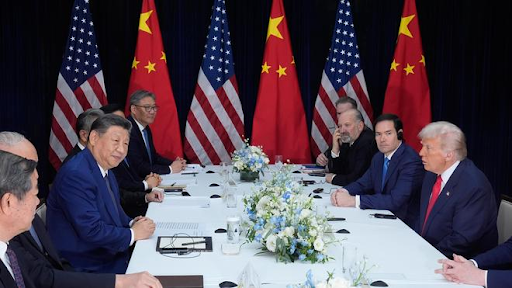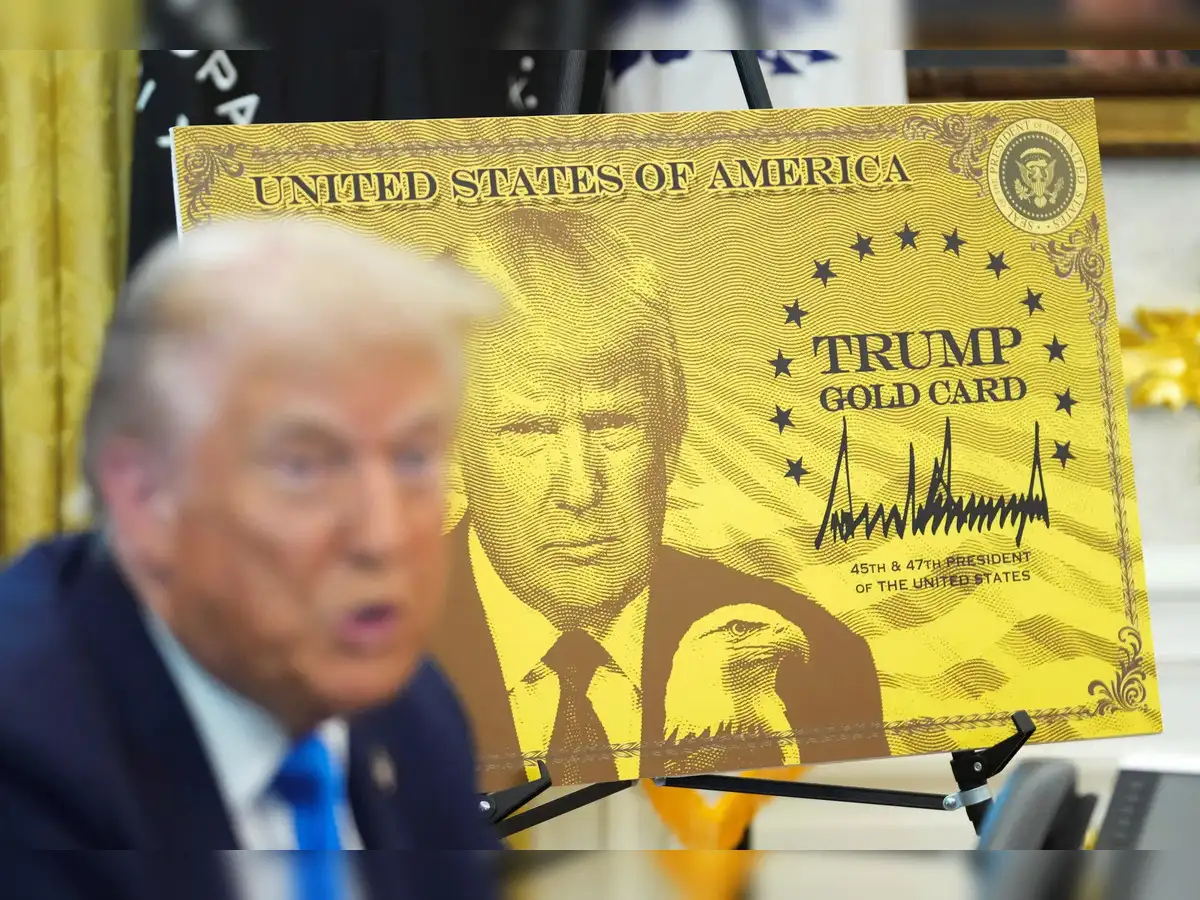



The U.S. and China agreed to a 90-day 115% tariff reduction to ease a severe trade war that began in 2025. Triggered by deficits, fentanyl concerns, and geopolitical rivalry, the conflict disrupted global trade, raised consumer prices, cut jobs, and shrank GDP, prompting fears of stagflation and recession worldwide.

Copyright infringement not intended
Picture Courtesy: INDIAN EXPRESS
U.S. and China agree to a 90-day tariff reduction to ease trade tensions, slashing their tariffs on each other’s goods by 115%.
The latest round of tariff conflicts began in February 2025 when US President Donald Trump imposed new tariffs on China. Unlike previous trade disputes, this escalated rapidly with both sides implementing extremely high tariff rates.
Trade Deficit Concerns => The US runs a massive $1.2 trillion goods trade deficit with the world, with China being a significant contributor ($263.3 billion in 2024).
Fentanyl Crisis => The US imposed a 20% tariff on China, alleging it provides a “safe haven” for criminal organizations producing fentanyl, a synthetic opioid linked to thousands of overdose deaths in the US.
Protecting Domestic Industries => The US aimed to revive manufacturing jobs by protecting industries like steel, aluminum, and automobiles from Chinese competition.
Geopolitical Rivalry => China’s economic rise, fueled by initiatives like the Belt and Road Initiative and “Made in China 2025,” alarms US policymakers.
|
China retaliated with its own tariffs, starting at 34% and peaking at 125% by April 2025. China also imposed non-tariff measures, like restricting rare earth exports and targeting US firms, to counter US pressure. This tit-for-tat escalation turned the trade dispute into a full-blown trade war. |
Impact on the US Economy
Higher Consumer Prices => Tariffs raised the cost of imported goods, with a $100 Chinese product costing $245 at a 145% tariff rate.
Economic Contraction => US GDP shrank by 0.3% in Q1 2025, driven by reduced imports and hoarding before tariffs hit. Economists warned of a looming recession or stagflation, with inflation rising due to “tarifflation.”
Job Losses and Slowed Investment => Tariffs reduced imports by $740 billion (22%) in 2025, disrupting supply chains. Ports like Los Angeles and Long Beach saw a 35-38% drop in container arrivals, threatening jobs in logistics and retail.
Market Volatility => Stock markets lost trillions. The US dollar weakened, and Treasury yields increased, reflecting investor fears of economic instability.
Sector-Specific Distress => Industries like agriculture (soybeans, chicken) and semiconductors faced Chinese retaliatory tariffs, losing market share. Clean energy sectors struggled as Chinese lithium-ion battery imports became costlier.
Impact on the Chinese Economy
Export Decline => China’s exports to the US fell 21% in April 2025, with manufacturing activity contracting (PMI at 49). Export orders hit a low not seen since 2022.
Domestic Challenges => China grappled with deflation, a property market crisis, and high debt levels, making it vulnerable to external shocks.
Supply Chain Shifts => Tariffs accelerated China’s push to diversify export markets and boost domestic consumption, reducing dependence on the US. This resilience helped China maintain growth of 5.4% in Q1 2025, exceeding expectations.
Global Impact
Trade Contraction => The World Trade Organization estimated an 80% drop in US-China goods trade, disrupting $650 billion in commerce. Global trade fell 5%.
Supply Chain Disruptions => Tariffs distorted global value chains, reducing efficiency and transparency. Countries like Vietnam, Indonesia, and Malaysia faced pressure as Chinese goods were rerouted through them.
Recession Risks => The International Monetary Fund slashed growth forecasts for most countries, quoting US tariffs as a key driver. Europe implemented “tariff shields” worth billions to protect businesses, while East Asian allies like Japan and South Korea faced high US tariffs, straining relations.
Must Read Articles:
CHINA-US TRADE WAR FOR DOMINANCE
IS IMPOSING TARIFFS ON CHINESE IMPORTS A GOOD IDEA?
Source:
|
PRACTICE QUESTION Q. Analyze how the imposition of tariffs by both the US and China has affected global supply chains. How has this disruption influenced India's manufacturing and export sectors? 250 words |




© 2026 iasgyan. All right reserved